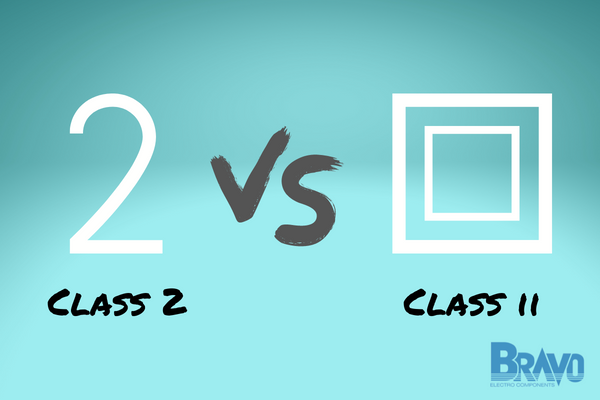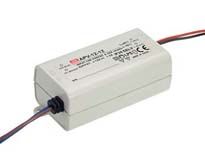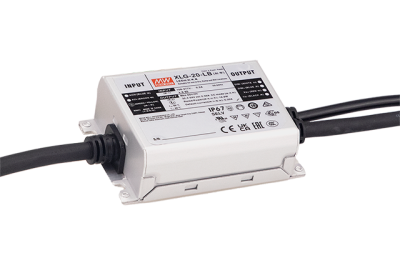
When shopping for power supplies, there are so many factors and specifications to consider. But, two particular ratings that are commonly confused as the same are class 2 vs class II. What's the difference between these? And, which of them is right for your unique application?
While NEC's class 2 designation speaks to the output voltage and power capabilities of a power supply, the IEC's class II designation takes a look at the internal construction and insulation protection of a power supply.
These ratings are completely different and independent from one another. However, they each have their place in your shopping considerations. In this in-depth guide, we'll break down everything you need to know about class 2 power supplies and class II power supplies. You'll also learn a few other key considerations to take into account when looking for an AC DC power supply. Stay tuned till the very end, as we'll point you towards your one-stop-shop for all things electrical components - including both of these designated power supplies!
First, let's get into the matter at hand: breaking down the difference between class 2 power supplies and class ii power supplies.
What is the Difference Between Class 2 vs Class II Power Supplies?
As we briefly mentioned above, both class 2 vs class II power supplies are a special designation by a governing body. The two ways in which they differ are who rates/designates them, and what they're rated/designated upon. To help you gain a full understanding of what each of these ratings means and why they're important to you, we'll break them down below. Let's start by addressing the question: what is a class 2 power supply?
What is a Class 2 Power Supply? An Overview of NEC's Output Voltage & Power Ratings
The NEC - or National Electric Code - is a benchmark for safe electrical design, installation, and inspection. It also takes into account performance. And, a class 2 power supply is one that has been designated by the NEC as having specific voltage and power output limitations.
In order for a class to be given this designation, it must adhere to Article 100 of the NEC. According to this article, class "designates equipment with specific limitations regarding circuit voltage and current." More plainly, a class designates what an appliance is rated for - in terms of both maximum voltage and amperage that the appliance can handle.
Moreover, a class 2 power supply addresses specific wiring requirements between the output of the supply and the input of the load. These requirements include - but are not limited to - wire size and insulation, wire derating factors, overcurrent protection limits, and methods of wiring installation.
So, with all this said, why should you care about finding class 2 power supplies? Well, these have been rated as such because they carry a lower risk of both electrical shock and fire initiation. As a result, you're able to resort to more cost-effective wiring and installation methods. And, let's face it - the peace of mind that comes with a class 2 power supply is worth the price on its own.
But, how does the class 2 power supply compare to a class ii power supply - which also takes a look at insulation protection? To find your answer to that question, keep reading down below.
What is a Class II Power Supply? An Overview of IEC's Internal Construction & Insulation Protection Ratings
So, what is a class II power supply? First, let's define the IEC - or International Electrotechnical Commission). This designator of protection evaluated the construction and insulation of power supplies. The reason this specific rating is important, though, is similar to the class 2 designation: safety. A class II power supply carries a lower risk of electric shock, just like a class 2 power supply. However, the manner in which these are evaluated and rated differs greatly.
A class II power supply must have two separate layers of insulation between the user and the internal current-carrying conductors. The first layer is just a basic form of insulation. The second, however, is an insulating case that fully encloses the product. You may have seen these in person before without realizing it - such as on a desktop power supply. The one caveat to double layering requirements is if a power supply contains a single layer of reinforced insulation.
You'll notice another difference between class 2 vs class II power supplies is that the latter used a two-wire power code instead of a three-wire power cord. This is by design - as it further enhances the safety of the unit.
Class 2 vs Class II: Which of These Matters More for My Use Case?
Now with a clear understanding of what both of these designations means, it's time to address the main question you came here with - does one of these matter more than the other? Which one should I seek out when shopping for a power supply?
The answer to this question isn't as cut and dry as you might hope. Unlike the UL listed vs UL recognized debate, one isn't necessarily "better" or "more encompassing" than the other. Moreover, classifications are only one part of the equation when it comes to choosing a power supply. In order for a power supply to be right for your needs, it must also match - or exceed - the specifications of your application.
But, by going with either a class II or class 2 power supply, you can greatly decrease your risk of fire initiation and electric shock. on a more broad level, you can enjoy peace of mind knowing you're getting a high-quality unit made and tested under strict standards. The chance of failure is much lower - and you'll spend far less time trouble shooting power supplies.
This includes - but is not limited to - voltage, current, wattage, and footprint (among others). With that in mind, finding a class II or class that meets all these other requirements can be tricky. There are other considerations depending on the specific application, too - such as medical power supplies.
As such, we recommend working with an expert who can help you find the perfect unit for your needs. And if that's something you're interested in, be sure to continue reading till the end - we'll point you in the right direction for this. First, let's quickly discuss a few other ratings and specifications to keep in mind when browsing power supply units besides just class 2 and class ii.
Other Ratings & Specifications to Consider When Shopping for Power Supplies
We briefly mentioned a few other ratings and specs to keep in mind when looking for class , but let's go into a bit more detail. After all, these are just as important (if not more so) than classifications:
- Voltage: the output voltage of your power supply must match - or exceed - the requirements of your application.
- Current: this is how much current a power supply can provide continuously without exceeding its temperature specifications.
- Wattage: this is the maximum amount of power that a PSU can deliver safely and is calculated by multiplying volts and amps.
- Efficiency: measures how much of the DC input power is converted to AC output power vs lost to heat. This is represented as a percentage and the higher, the better.
- Footprint: this is how much space - in two dimensions - your power supply will take up. This is important to consider as some power supplies can be quite large.
By taking all this into account, you can effortlessly find the perfect AC DC power supply for your unique needs. But, maybe you want a bit more assistance and guidance to help you navigate the difference between Class 2 vs Class II Power Supplies. If so, you're in luck - at Bravo Electro, we don't just have all the electrical components you need. We can help you get set up with exactly what you need - so you don't have to play the guessing game and risk wasting time and money.
Bravo Electro Has Your Class II and Class 2 Power Supply Needs Covered!
Now that you know more about classifications and what to look for when shopping for a power supply, where can you go to find one? Well, if you need a class 2 or class II power supply, Bravo Electro is here to help. We offer an extensive catalog of AC/DC power supplies of all voltages - including 12 volt DC power supply, 24 volt DC power supply, and 48 volt DC power supply. All our products are sourced from the most trusted, reputable manufacturers in the electrical component industry - like Mean Well.
But, the real reason more and more people like you are sourcing their power supply needs through us? The support we offer every step of the way. You don't have to stress any longer about getting the right product. Just reach out - we'll talk over your needs, budget, and application. From there, you'll get an accurate recommendation on what you need. And if you have a custom project you need help with, we can handle that, too. Our engineers are on standby ready to talk over the details with you.
And, if you order right now, we may even be able to offer same-day delivery under certain circumstances. So, what are you waiting for? Shop now for the quality class 2 and class II power supplies you need!
Wrapping up the Difference Between Class II and Class 2 Power Supplies
We hope this article helped clear some things up for you. Classifications can be confusing - but they don't have to be.
Just remember the main difference: class II refers to internal construction and insulation while class 2 is all about output voltage and power capabilities. While they both speak to the safety, performance, and longevity of a power supply - they do so in different ways. By choosing one of these types of power supplies, you can feel confident knowing you're investing in safe, high-quality units. Other than that, just keep an eye out for other ratings and specs (like voltage, amperage, efficiency, etc) when browsing power supplies and you'll be sure to find the perfect one in no time.
Still feeling a bit lost or need help with a custom project? No problem! The experts at Bravo Electro are always happy to chat and offer guidance. We know how important it is to get the right product - so don't hesitate to reach out today. Or, explore our blog to learn more about electrical components - including how to convert dc to ac, what a fully modular power supply is, and the difference between ac and dc power.










